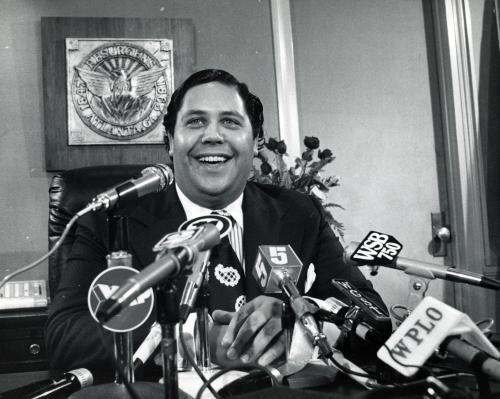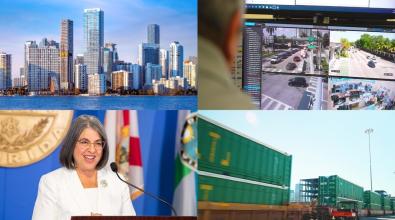Four ways to turn procurement into a force for change

To turn city purchasing into a force for change, city leaders need to focus on the “four pillars of procurement excellence.”
Talk to mayors about how their city halls buy goods and services, and you are likely to hear a litany of complaints. Procurements take too long. Not enough companies bid on city contracts. The same firms always win. Archaic rules and procedures make it impossible to get anything new done. Not enough contracts go to local businesses or to businesses owned by people of color. These frustrations often cause mayors to focus their attention elsewhere.
Yet procurement is one of the most important and powerful tools local leaders have at their disposal. Just about everything cities do, from paving roads to housing the homeless, involves purchasing goods and services. Typically, one-third to one-half of a city’s budget goes toward buying things from the private sector. There is a big opportunity for local leaders to deliver better results with that spending and turn procurement from a back-office administrative annoyance into a real force for transformational change.
Our team at the Harvard Kennedy School Government Performance Lab (GPL) helps cities across the U.S. do just that—including through a recent executive training program as part of the Bloomberg Harvard City Leadership Initiative. Through this work, we’ve found that it’s absolutely possible for cities to transform procurement into a strategic force for change. We’ve also found that, to get there, city leaders need to focus on four steps—what we call the “four pillars of procurement excellence.”
Make the procurement process efficient, inviting, and transparent
While it’s not uncommon for a city procurement process to take 10 or 12 months, city leaders can almost always reduce average cycle times by one-quarter or more if they make a concerted effort to identify and eliminate bottlenecks. With the right IT and data analysis, they can also spot duplicative or unnecessary contracts that can be consolidated for savings. And most importantly, if cities can make the procurement process inviting and transparent for vendors, more firms will want to do business with the city.
Buy results, not activities
Too often, cities contract for an overly prescriptive list of vendor activities rather than creating a framework for collaborating with vendors to achieve a desired outcome. For example, in one city, contracts for homeless services required reporting on the number of showers delivered in shelters but did not measure the number of people placed in permanent housing. City leaders can fix this by structuring procurements to be aligned with the outcomes they want to achieve, measuring the right results, and actively managing contracts using real-time performance data. This shift in thinking can also open the door to working with different vendors who may have new ideas for how to solve a problem and with residents who can identify service needs.
Make procurement systems more equitable
Businesses owned by people of color continue to face barriers to winning city contracts—including everything from explicit discrimination to common practices that can lock out smaller firms. To overcome these barriers, cities need to make it easier for small vendors to do business with the city—by simplifying bidding processes, paying promptly, reducing excessive insurance requirements, and unbundling large contracts into smaller, more manageable opportunities. Cities also need to adequately staff vendor outreach teams and put real resources into coaching small businesses and providing them with upfront capital.
Procurement equity also means making sure the services cities contract for are delivered equitably, no matter who gets the contract. For example, city leaders should monitor the performance of businesses hired to fix sidewalks or pick up the trash and hold them accountable for delivering the same level of service in low-income neighborhoods as they do in wealthy areas.
Elevate procurement as a strategic function
It’s not enough to hire a savvy chief procurement officer who wants to shake things up. Sustaining these efforts requires culture change throughout city government. It means bringing procurement leads across local government into a broader conversation about how their work advances critical citywide goals. Deeper in the ranks, it also means investing in the training needed to empower staff engaged in procurement to see themselves as change agents. From Long Beach, Calif., to Glendale, Ariz., to Little Rock, Ark., we’ve seen procurement progress snowball (even in communities that receive little snow!) when cities make an organization-wide commitment to achieving excellence in procurement.
None of these four pillars are easy, but there are plenty of examples from cities that show what’s possible. Not long ago in Tulsa, Okla., a lengthy procurement process with repetitive administrative steps meant delays in starting new services and acquiring urgently needed products. Furthermore, most contracts were awarded to incumbent firms that knew how to navigate the complex process. Mayor G.T Bynum made fixing this a priority.
In addition to hiring a talented new purchasing director, Tulsa launched the Procurement Excellence Steering Committee, a cross-departmental body that develops and spreads procurement solutions. Two years in, the city has removed painful steps from the procurement process and engaged more than 300 local firms through outreach efforts. The results: The city has already seen a 50-percent reduction in the number of solicitations that receive only one bid and has cut 24 days from average cycle times.
Another example comes from 1970s Atlanta, which was getting ready to expand its airport into what would become the world’s busiest by passenger volume. Mayor Maynard Jackson insisted that 25 percent of the construction contracts go to Black-owned firms. When the city’s usual construction partners balked, Jackson told them they could either have access to 75 percent of a big number or 100 percent of zero. The mayor’s strategy worked. According to Black Enterprise magazine, Jackson “strengthened the Black middle class, created scores of Black millionaires,” and bolstered small firms that went on to become very large firms—firms that today are some of the nation’s largest Black-owned businesses.
A key insight from Atlanta is that a good time for a city to diversify its vendor base is when buying something new. When a city is renewing a contract, it’s much harder for businesses with less experience to win the contract over incumbents. This lesson is important to keep in mind during a moment when billions of new federal dollars for economic recovery and infrastructure are headed to cities. For leaders who want to boost economic opportunity throughout their cities, now is the time to act.
Jeffrey Liebman is the Malcolm Wiener Professor of Public Policy at the Harvard Kennedy School where he directs the Taubman Center for State and Local Government and the Government Performance Lab.



